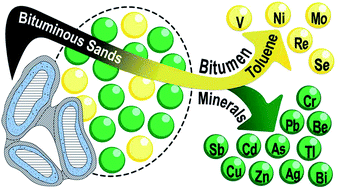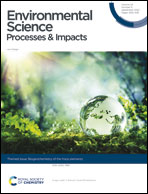Environmental significance of trace elements in the Athabasca Bituminous Sands: facts and misconceptions†
Abstract
The bituminous sands of Alberta, Canada, represent the second largest reserves of hydrocarbons on earth. Open pit bitumen mining and upgrading of the Athabasca Bituminous Sands (ABS), the largest of the deposits, began in 1967. Concerns about fugitive release of trace elements (TEs) to the environment began with studies of V, as this is the most abundant trace metal in bitumen. Recent studies, however, have extended to Ag, As, Be, Cd, Cr, Cu, Pb, Sb, and Tl, and this has led to considerable confusion about which TEs are relevant to ecosystem health. While V along with Ni, Mo, Se and Re are enriched in bitumen, Ag, As, Be, Cd, Cr, Cu, Pb, Sb and Tl are found almost exclusively in the mineral (i.e. sand) fraction of the ABS, with limited opportunity to become bioaccessible, much less bioavailable. Here, a summary is given of ten misunderstandings that have arisen regarding TEs in the environment of the ABS region. To help illustrate the significance of the misconceptions that have arisen regarding (a) air and (b) water resources, published and unpublished TE data obtained from the metal-free, ultraclean SWAMP lab is presented for: (a) snow, moss, and peat cores from bogs, and (b) the dissolved, particulate, and colloidal fractions of water from the Athabasca River (AR), as well as pristine groundwater. Natural enrichments of Ni in plants such as Rat Root (Acorus calamus) and pine (Pinus banksiana), Tl in fish (Percopsis omiscomaycus) and Cd in cranberries (Vaccinium oxycoccus), Labrador Tea (Rhododendron groenlandicum) and beaver (Castor canadensis), are also presented.

- This article is part of the themed collections: Recent Open Access Articles, Geochemistry and Biogeochemistry of the Trace Elements


 Please wait while we load your content...
Please wait while we load your content...